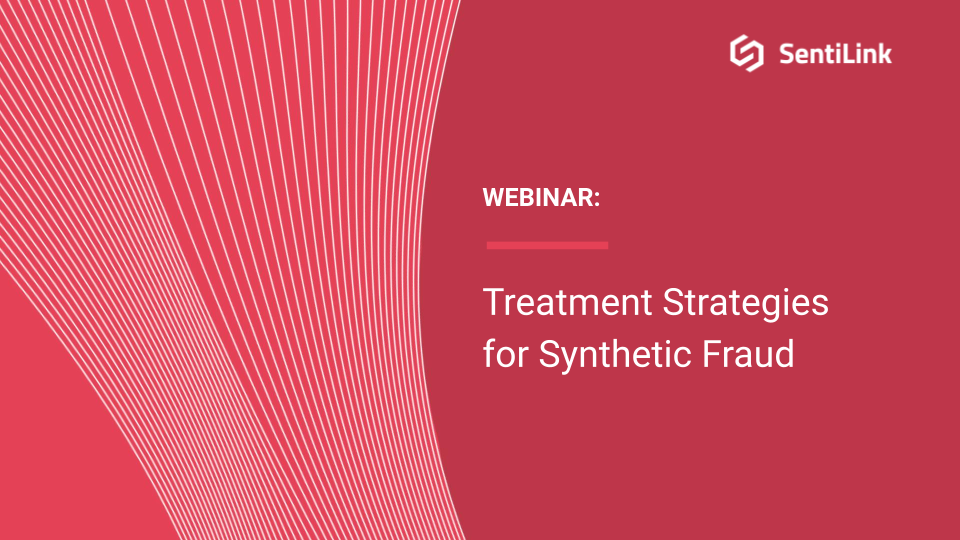Blog post
Treatment Strategies Webinar Rewind
SentiLink
Published
December 10, 2020

Thanks to our expert panelists for a terrific webinar yesterday. They gave tremendous insight into how they are addressing synthetic fraud. Below is a summary of just a few example questions answered during the session:
What is and is NOT synthetic fraud?- "Synthetic identity is a fictitious name, date of birth and SSN used in an account opening process."
- "If an email address doesn't match a real person or phone number, or is a fake, that is NOT synthetic fraud."
What is the most important thing Navy Federal did to address synthetic fraud?
- "Analyzing our own data (charge offs) to understand which was due to synthetic fraud is the most valuable thing we did."
What characteristics does PenFed look for to identify synthetic identities?
- "Thin credit file, certain tradelines on the credit report, bogus employment, no existence of online presence, other people using the same SSN."
What series of database checks does Austin Capital Bank go through when verifying an identity?
- "Does the person applying match an identity? Does the tax ID match the individual? For the first step, we collect and ID card and have them go through a selfie process to verify the ID is valid. For the 2nd step, we verify whether the SSN makes sense for this person. If it falls below a threshold, we will imminently be rolling out eCBSV to try to match it with what's on file with the SSA."
What is the best treatment strategy when you suspect someone is applying with a synthetic identity?
- "For suspected first party synthetic identities, processing an SSA-89 form or eCBSV is a reasonable verification flow. For suspected third party synthetic identities, asking for a drivers license is smart thing to do."
What’s a pollinator address?
- "When you pay a stranger to be an authorized user on their credit card, the physical card doesn't get sent to the buyer, but the stranger's address is furnished to the buyer's credit report. The same folks tend to sell their authorized user tradelines over and over again. The addresses associated with people who do this are referred to as pollinator addresses."
What tactics are often associated with people seasoning synthetic identities?
- "Credit washing, authorized user tradelines and the use of non-reputable credit repair agencies."
Why does taxonomy matter as it relates to synthetic fraud?
- "When it gets down to treatment of an identity that's where taxonomy matters. You have to know whether you are dealing with synthetic fraud or id theft or some other kind of fraud to know how to treat that application."
Thanks very much to Chip Kohlweiler from Navy Federal, Matt Beardsley from PenFed, Erik Beguin from Austin Capital Bank, and Maxwell Blumenfeld from SentiLink for sharing their insights. In case you missed it, you can watch it here.
Related Content

Blog article
December 2, 2025
The Identity-Theft Risk Profile of NBA and NFL Draft Prospects
Read article
Blog article
November 21, 2025
CIP Requirements: What Financial Institutions Need to Know
Read article
Blog article
November 7, 2025